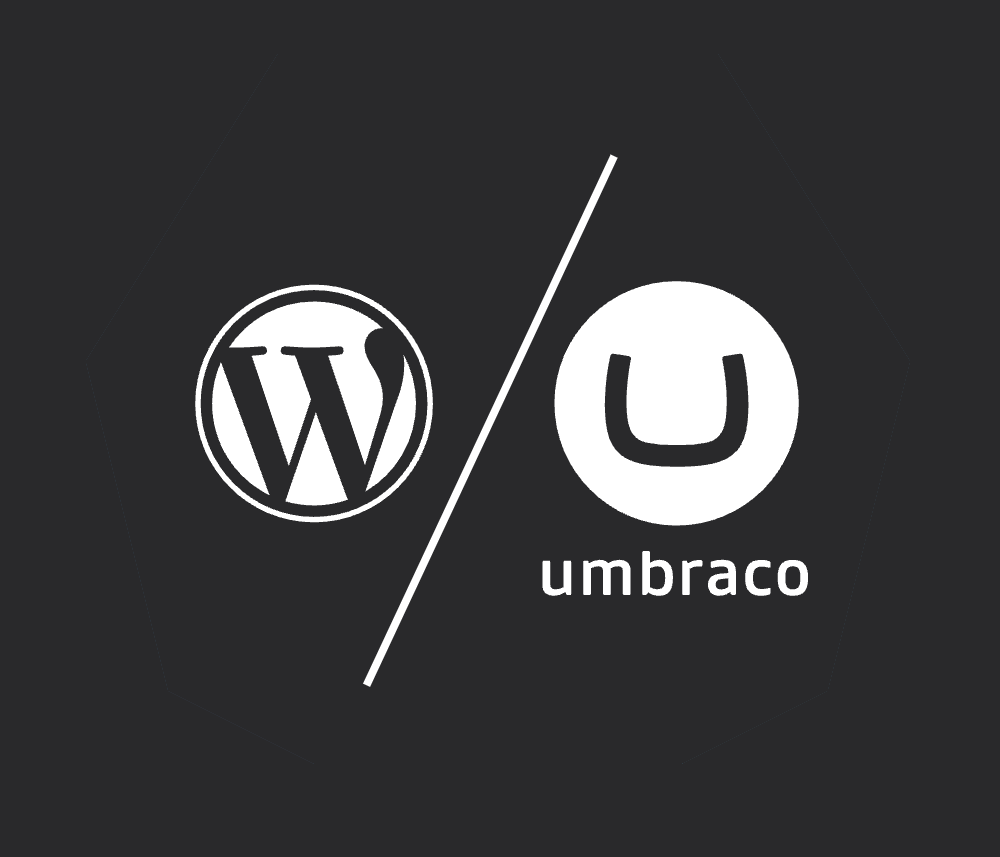Discover why Umbraco outshines WordPress with superior support, security, and a hybrid CMS architecture, offering a meticulously vetted, versatile platform for modern web development.
In the world of Content Management Systems (CMS), WordPress has long been a household name, synonymous with ease of use and widespread adoption. However, Umbraco, a slightly less known contender, offers a unique set of advantages that make it a formidable alternative, especially for those seeking more than what WordPress can provide. This article aims to shed light on why Umbraco is the superior choice for certain web projects, focusing on its support system, security features, and its meticulous vetting by Umbraco HQ, as opposed to the purely community-driven WordPress.
Overview of Umbraco CMS
Umbraco is a flexible, open-source CMS built on the Microsoft .NET framework, offering a range of features that cater to developers and content creators alike. Known for its scalability and robust content management capabilities, Umbraco provides a user-friendly interface that makes site management and content publishing seamless. Unlike WordPress, which relies on plugins for extended functionality, Umbraco comes with a strong foundation that can be customized to meet specific needs without compromising performance. Its target user base includes businesses and developers looking for a powerful yet manageable platform that can handle complex site architectures and large volumes of content efficiently.
Overview of WordPress
WordPress, on the other hand, is an open-source CMS that powers a significant portion of the internet. It is renowned for its simplicity, extensive plugin ecosystem, and themes that allow users to create and manage websites without needing deep technical knowledge. WordPress caters to a wide range of users, from bloggers and small businesses to large corporations, offering flexibility and ease of use. However, this broad appeal and reliance on plugins for functionality can sometimes lead to security vulnerabilities and performance issues, especially as a site grows in complexity and size.
Support Comparison
When it comes to support, both Umbraco and WordPress offer resources to help users navigate challenges. However, the nature and quality of this support can significantly impact the user experience and site performance.
- Umbraco stands out with its direct support system provided by Umbraco HQ. Users of Umbraco can access professional support and guidance, ensuring that any issues are addressed by experts familiar with the intricacies of the platform. This professional support is beneficial for businesses and developers who manage complex sites and require timely assistance.
- WordPress, while having a vast community offering forums, blogs, and tutorials, lacks direct support from a centralized authority. While community support can be invaluable, finding solutions for specific or complex issues can be more time-consuming and less reliable than the direct support provided by Umbraco HQ.
Security Comparison
Security is a paramount concern for any website. Umbraco and WordPress offer different approaches that reflect their underlying philosophies and user bases.
- Umbraco's security model benefits significantly from its structured support and development system. With Umbraco Cloud users receive automatic platform security updates that are thoroughly tested to ensure they do not impact the core website functionality. This proactive approach to security minimizes vulnerabilities and allows users to focus on their content rather than constantly managing security patches.
- WordPress's open-source nature means it relies heavily on third-party plugins for extended functionality. While this provides flexibility, it also introduces security risks. WordPress does offer automatic updates, including security patches, which can be a double-edged sword. The vast ecosystem of plugins and themes means that automatic updates have a higher potential to disrupt site functionality or break third-party integrations. As a result, WordPress site owners often face a dilemma: enable automatic updates and risk breaking crucial site functionality or disable them and potentially leave security vulnerabilities unaddressed. This makes managing a WordPress site securely more cumbersome and risky, especially for sites that rely heavily on plugins.
Open Source and Community Involvement
Both Umbraco and WordPress are celebrated for their open-source foundations, allowing users from around the world to contribute to their development. This shared characteristic, however, manifests differently within each platform, especially in terms of community contributions and the vetting process.
Umbraco: A Vetted Open-Source Community
Umbraco's approach to its open-source community is characterized by a balance between openness and quality control. While it encourages community contributions, including plugins and extensions, there is a significant emphasis on ensuring that these contributions meet high standards of quality and security. Umbraco HQ plays a crucial role in this process, vetting community-driven features and integrations before they become part of the official Umbraco ecosystem. This vetting process ensures that while the platform benefits from the innovation and diversity of its community, the integrity and reliability of the CMS remain uncompromised.
Furthermore, Umbraco's community is structured to foster robust development practices, with Umbraco HQ providing clear guidelines and support for contributors. This results in a more cohesive and reliable set of features and extensions, enhancing the overall quality of the platform.
WordPress: A Community-Driven Ecosystem
In contrast, WordPress's community-driven model emphasizes volume and variety, with tens of thousands of plugins and themes available. This vast ecosystem is a testament to the platform's accessibility and the creativity of its community. However, the lack of a centralized vetting process means the quality and security of these contributions can vary widely. While the WordPress core itself is maintained by a dedicated team that ensures its reliability and security, the same level of oversight does not apply to third-party contributions.
This open approach has its advantages, offering unparalleled variety and customization options. Yet, it also presents challenges, particularly for users who may not have the expertise to evaluate the quality and security of the plugins and themes they choose to use. The onus is on the site owner to ensure their WordPress installation remains secure and functional, navigating the complexities of compatibility and updates among a countless number of third-party options.
Extensibility and Integration: The Hybrid Advantage of Umbraco
One of the most compelling features of Umbraco is its architecture as a "hybrid" CMS, blending the strengths of traditional and headless CMS functionalities. This dual approach positions Umbraco uniquely in the CMS landscape, offering users the best of both worlds for a more versatile and comprehensive web development experience.
Traditional CMS Functionality
As a traditional CMS, Umbraco provides an intuitive and user-friendly interface for content management, allowing users to easily create, manage, and publish content. This includes a wide range of content types, from simple blog posts to complex media galleries, all manageable through Umbraco's back-office panel. The platform's traditional CMS capabilities ensure that non-technical users can effectively manage their website's content, making it accessible to a broader audience.
Headless Content Delivery
In addition to its traditional CMS features, Umbraco also operates as a headless CMS, offering Application Programming Interfaces (APIs) for content delivery across different channels and devices. This headless functionality allows developers to build and deploy content-rich applications using the technology stack of their choice, separate from the CMS's content management interface. By decoupling content management from delivery, Umbraco enables greater flexibility and scalability, ensuring that websites and applications can serve dynamic content across a multitude of platforms, from web and mobile applications to Internet of Things (IoT) devices.
The Best of Both Worlds
This hybrid approach allows Umbraco to cater to a wide range of project requirements, from straightforward website content management to complex, multi-channel content delivery strategies. Developers and content creators can leverage Umbraco's robust content management capabilities while also utilizing its headless APIs for flexible integration and distribution.
Moreover, Umbraco's extensibility and integration features are further enhanced by its open-source community and Umbraco HQ's support. The platform's architecture is designed to be highly customizable, with a vast array of plugins and integrations developed by the community and vetted by Umbraco HQ. This ensures that, regardless of the project's complexity, Umbraco can be tailored to meet specific needs, integrating seamlessly with other systems and technologies.
Conclusion
Choosing between Umbraco and WordPress is not only a matter of preference but understanding the distinct advantages each platform offers. Umbraco distinguishes itself with a support system backed by Umbraco HQ, superior security measures including vetted automatic updates, and a robust, quality-controlled open-source community. These features make it an attractive option for businesses and developers seeking a reliable, scalable, and secure CMS.
Furthermore, Umbraco, as a hybrid, composable CMS platform signifies a shift towards more adaptable and future-proof web development practices. Umbraco's ability to offer both traditional CMS functionality and headless content delivery options provides users with a powerful tool for creating and managing digital experiences that meet the evolving expectations of today's audiences. This dual capability, combined with the platform's focus on security, support, and a quality-controlled open-source community, underscores Umbraco's distinct advantages over WordPress and other open-source CMS platforms.
Frequently Asked Questions
Comparing the cost of ownership between Umbraco Cloud and WordPress involves considering several factors, including setup fees, hosting, maintenance, and scalability. While WordPress might offer lower initial costs, especially with its wide range of free themes and plugins, Umbraco Cloud could present a more predictable cost model with its subscription-based pricing, which includes hosting, support, and other services.
When it comes to content migration, the ease and support depend significantly on the complexity of the existing website and the resources available. WordPress, with its extensive plugin ecosystem, might offer tools for easier migration. In contrast, Umbraco Cloud might require more manual intervention but could offer more tailored support through its service packages.
Integrating Umbraco Cloud or WordPress with business systems and tools like CRM, e-commerce platforms, and marketing automation tools varies in complexity and flexibility. WordPress offers a vast ecosystem of plugins for numerous integrations, simplifying connections to a wide range of services. Umbraco Cloud, with its strong focus on customizability and developer-centric approach, may require more custom development for specific integrations but offers robust APIs for tailored solutions. The choice between them depends on the specific needs for integration and the technical resources available for custom development.
Related Articles
Results Matter.
We design creative digital solutions that grow your business, strengthen your brand and engage your audience. Our team blends creativity with insights, analytics and technology to deliver beauty, function, accessibility and most of all, ROI. Do you have a project you want to discuss?
Like what you read?
Subscribe to our blog "Diagram Views" for the latest trends in web design, inbound marketing and mobile strategy.



